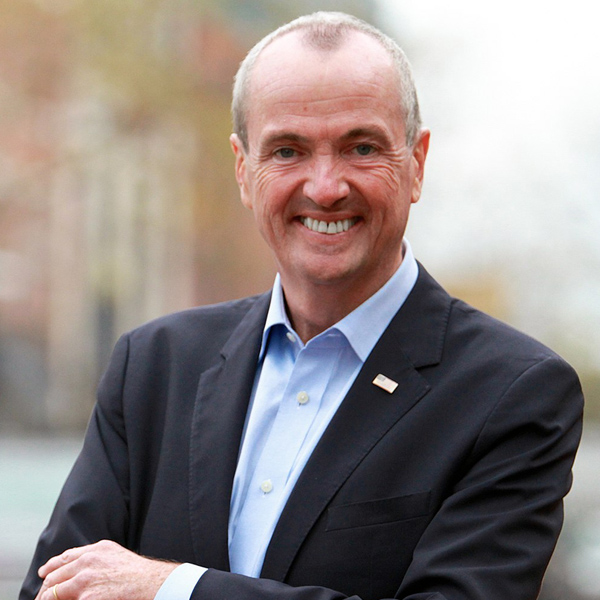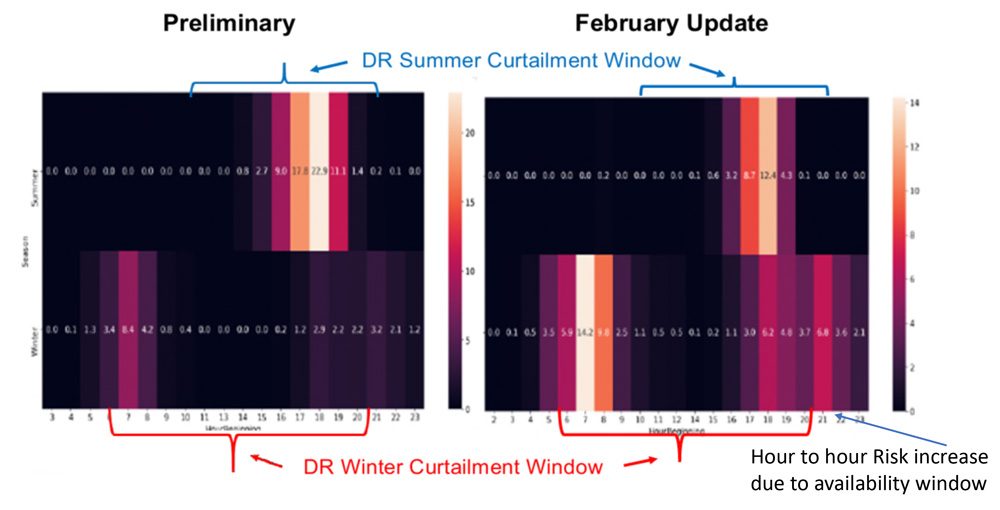New Jersey Gov. Phil Murphy has directed the state Board of Public Utilities (BPU) to advance the opening of its fifth offshore wind solicitation by 15 months as the state scrambles to recover the time lost when Danish developer Ørsted abandoned two of the state’s first three projects.
Murphy (D) said advancing the solicitation from the third quarter of 2026 to the second quarter of 2025 “builds upon the momentum of the state’s growing offshore wind industry” as it strives to reach its goal of installing 11 GW of OSW capacity by 2040.
The May 28 announcement comes as concern about the effectiveness and public benefit of wind generation continues to surface at public hearings. It emerged at legislative budget hearings on the finances of the BPU and at a permit hearing for the state’s now-leading OSW project — Atlantic Shores — held May 14 by the state Department of Environmental Protection (DEP).
$125M Payment
The state has pushed ahead undeterred since October, when Ørsted abandoned two of the state’s first three OSW projects, Ocean Wind 1 and 2. The BPU awarded two new projects in January at the conclusion of its third solicitation. And within weeks of Ørsted’s withdrawal, Murphy directed the BPU to speed up the normal two-year cycle between solicitations and prepare for the fourth solicitation, which opened in April and will close July 10. (See New Jersey Opens 4th Offshore Wind Solicitation.)
Murphy said in a release announcing the accelerated timeline for the fifth solicitation that Ørsted has agreed to pay the state $125 million in a settlement to “release claims against each other arising out of or related to the Ocean Wind Projects.”
The developer has agreed to put $200 million into an escrow fund New Jersey could spend on other wind-related projects. The law also required the developer to post a performance security of $100 million for the completion of the project, which would be forfeited if the project failed to reach commercial operation. Lawmakers set up the provision to strengthen the requirements on Ørsted in return for the state allowing the developer to receive federal tax credits awarded to support OSW projects. The credits otherwise would otherwise have gone to help state ratepayers. (See NJ Lawmakers Back Ørsted’s Tax Credit Plea.)
Murphy also said the state would “pause” its planned second solicitation for offshore infrastructure projects using the State Agreement Approach (SAA), which would allow coordinated offshore wind transmission planning with regional grid operator PJM.
The BPU completed its first SAA process in October 2022, awarding $1.07 billion for transmission upgrades to deliver 6,400 MW of offshore wind generation to the PJM grid. BPU officials said it would save ratepayers hundreds of millions of dollars, but the solicitation award covered only upgrades to the landside portion of the transmission. (See NJ BPU OKs $1.07B OSW Transmission Expansion.)
The BPU planned the second SAA to solicit coordinated transmission alternatives for the offshore portion of the transmission lines. But FERC on May 13 released Order 1920, the long-awaited final rule on long-term regional transmission planning and cost allocation. The order is of particular relevance to PJM’s ongoing interconnection queue reform process, Murphy said.
His release said he paused the SAA process to give BPU staff the “opportunity to fully evaluate the implications of the new FERC rule and participate in PJM’s process to ensure the best outcome to meet New Jersey’s transmission needs at the least cost to ratepayers.”
Efficiency Questioned
If all goes to plan, OSW projects now in the pipeline would account for about half — 5.25 GW — of New Jersey’s 11-GW goal. Aside from the 1,510-MW Atlantic Shores project, the state in January approved the 1,341-MW Attentive Energy Two project and the Leading Light project, with two phases of 1,200 MW each.
The state’s wind projects have faced opposition from the commercial fishing industry and tourism-related businesses. That skepticism was present at the May 14 hearing of the Senate Budget and Appropriations Committee, at which Republican senators pushed back on the BPU’s aggressive drive to line up wind projects. They questioned whether the state should launch an initiative in which it has little experience, for which the technology is new, and for which the eventual cost to ratepayers is unknown.
As he opened the hearing for lawmakers’ questions of BPU officials, Chairman Sen. Paul Sarlo (D), called the OSW projects “very controversial, as you know, politically charged” and queried whether the BPU is concerned the projects “may run the risk of not coming to fruition.”
Sen. Douglas J. Steinhardt (R), assessing the program’s recent history, was more direct.
“With so much uncertainty surrounding projects that are currently already underway, or were already underway and suspended, do you believe it is appropriate to open a new round of solicitation for future projects?” he asked BPU President Christine Guhl-Sadovy, referring to the fourth solicitation.
Given the rising costs, isn’t it “a bit sort of a quixotic quest and a tilt at windmills, no pun intended there,” he asked.
Great Opportunity
Guhl-Sadovy brushed aside his concerns.
“Offshore wind is really a once-in-a-lifetime opportunity to bring not only clean energy to New Jersey, but [also] billions of dollars in economic benefits, tens of thousands of jobs across the state, primarily in South Jersey,” Guhl-Sadovy said.
Sitting next to Guhl-Sadovy, Tim Sullivan, CEO of the New Jersey Economic Development Authority (EDA), which has funded much of the state’s OSW infrastructure investment, faced questions about the agency’s determination to position the state as an East Coast leader in offshore wind, quickly building an industry from scratch.
“If this is a once-in-a-lifetime opportunity, it’s also a once-in-a-lifetime opportunity to get this correct, or catastrophically incorrect, in my opinion,” Steinhardt said.
Sullivan acknowledged the risks of offshore wind. “Anytime we’ve got a new capital-intensive, regulatorily complex industry, you’re going to see fits and starts.” But the state must “focus on the competitive dynamics here, because other states want this leadership position.”
At a May 15 hearing of the Assembly Budget Committee, Assemblyman Gerry Scharfenburger (R) said he’s concerned the state is transitioning from fossil fuels in favor of solar and wind energy, whose “intermittent” characteristics would create “economic and environmental problems down the road.” He questioned the Murphy administration’s “prioritization of wind turbines over, say, nuclear energy.”
“I have no affinity for fossil fuels,” he said, adding that “I would put goose droppings in my car if it would make it run … We just have to look for the best alternative that is viable, is fiscally doable and is going to be there. It can’t be intermittent.”
Guhl-Sadovy said there was no preference against nuclear, which would account for 40% of the state’s electricity generation in state clean energy plans. She said the BPU believes in the sector economics.
“As we look at the clean energy that we’re investing in … we are going to see an economic development come to the state of New Jersey,” she said.
Nuclear or not
The role of nuclear energy also surfaced at the DEP’s May 14 hearing seeking public input on the Atlantic Shores project. The agency is assessing the developer’s request for waterfront development, coastal wetlands and other offshore environmental permits, as well as onshore permits for a transmission cable to run to the Cardiff substation in Egg Harbor Township.
Dennis DeForest, a member of Save the East Coast, a New Jersey group that opposes offshore wind, said the projects would damage the marine environment, disrupt neighborhoods when cables are run through them and hurt tourism. He added that voters never had a chance to vote on the issue.
“There’s really no reason for us to use this unreliable energy,” he said. “There’s other ways to create energy, clean green energy, right, through nuclear, with small nuclear reactors.”
Henry Waldron, a resident of Brigantine, one of the communities closest to the proposed OSW development, said the state already is too reliant on electricity produced by burning fossil fuels, and much of the power is imported from other states. He said his hometown — a barrier island near Atlantic City — already is affected by rising sea levels and damage to the beaches.
“New Jersey is already in a deficit for electricity,” he said, foreseeing brownouts by the middle of this decade.
“People talk small modular reactors,” which could be ready by 2040, but “big nukes” would take much longer, he said. “I don’t see anybody who’s yelling against wind offering their communities for more nuclear reactors. And a nuclear reactor would take 12 years (to build).”



